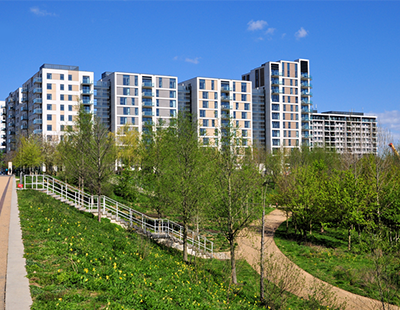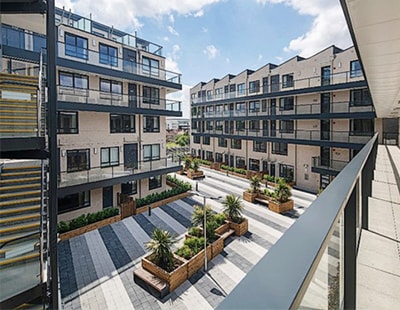There are definitely stormy skies ahead that BTR operators need to be prepared for as the summer peak and post-lockdown spike subside and the furlough scheme comes to an end.
The post-lockdown rental market
Firstly, there has been a dramatic increase in the supply of rental housing stock due to the implosion of the short-let market. Thousands of Airbnb properties were brought back onto the long-let market netting a 40% increase in available stock against the same period last year with most of these in Central London.
Renters not only have more choice than before lockdown, but many of these properties are owned by private landlords who are often able to be much more reactive on achieved rents to secure the let. Where BTR operators have been unable to adjust their pricing strategy so drastically, the gap between the BTR premium and market rents has widened - inevitably impacting occupancy rates and ERV’s.
A further challenge, and not one that looks set to improve anytime soon, is what has been described as a ‘mass exodus’ out of the city. Analysis carried out by the University of Oxford in April indicates that nearly 250,000 wealthy Londoners left the city for rural locations in the East and South East of England prior to lockdown.
Additionally, many young workers have also left the capital either directly due to job losses or because the option of working from home allowed them to return to family.
With the national experiment in remote working having been deemed a success, and further job losses on the horizon, only some of those who escaped to the country for lockdown have immediate plans to return.
The Escape the City careers advisory service reported that the number of city workers looking for jobs outside of London has more than doubled year-on-year compared with the same period in 2019.
Of course, this might be a temporary product of the financial or existential malaise many find themselves in during these trying times, or of concerns about the epidemiological risks posed by urban living. Nevertheless, we are unlikely to see the trend reversing so long as the pandemic continues to rage.
For those who do remain inside the M25, as we predicted in our previous piece, there has been a marked shift in priorities following their experience during lockdown.
After spending most of April and May trapped in densely populated central neighbourhoods and cramped living conditions, many young Londoners are now seeking homes in suburban locations with more green space and lower rents. Home Made’s proprietary research shows a massive 62% of renters are now looking to move to completely new areas of the city
‘Renting in London feels different post-lockdown.’
The inevitable outcome of all these compounding factors is that competition for renters, particularly within the BTR space, is fierce.
Thankfully, restrictions lifted as we entered the summer and the pent-up demand that had built up during lockdown was released just as we entered peak season. This surge in activity meant that those schemes that were able to react quickly to market conditions, and adopt the right strategies to reach a significant volume of renters, saw any initial hit in occupancy return to stabilised levels.
So, despite the ongoing pandemic, following a reasonably solid summer surely one could be forgiven for thinking that the worst is over? Sadly, it is more likely just the calm before the storm.
As the end of the government’s job retention scheme (JRS) approaches, figures published recently by the ONS reveal that redundancies are already rising at the fastest rate since 2009.
Young workers, in particular, are being badly battered by harsh economic headwinds. Around 730,000 people have already lost their jobs and this figure is expected to rise sharply, with the total numbers only likely to be apparent at the end of Q4 this year.
The impact on renter demand will be significant
Now is the winter of our discontent... Just last week, it was reported that approximately 1.5 million private renters were furloughed and it is predicted that up to 20% of workers enrolled on the JRS could be made redundant when the scheme ends at the end of October.
London is particularly vulnerable. It has the fourth highest rate of furloughed employees in the country (30%), with some boroughs including Newham, Hounslow, Haringey and Brent higher still at 35% or more. Should a significant number of these workers find themselves unemployed as the JRS winds down, the impact will be felt widely across the capital’s private rented sector.
BTR schemes could well see occupancy rates decline once again and those located in areas with high numbers of job seekers may struggle to find new residents able to pay full price for their properties.
Furthermore, where schemes might previously have had the option to turn to the short-let market as an additional revenue stream, the collapse of the international tourism industry means this is no longer a viable stopgap.
It is a similar story with the international student population. Although there has been some limited revival of interest from overseas students in line with the start of the academic term, enquiries are nowhere near their usual level. This usually reliable engine of BTR renter demand is likely to remain on pause for at least the duration of the Covid crisis and possibly longer.
To put it bluntly:
-
It is about to become much harder to lease up your scheme due to significant downwards pressure on demand, particularly in central locations and/or at higher price points.
-
There is an increased likelihood of existing residents falling into arrears or terminating contracts early due to job losses.
With an alarming increase in the number of daily Covid cases being reported, now is the time to prepare for the end of the JRS and begin formulating plans to minimise the potential impact on BTR schemes both in steady state and in mid or initial lease up phases.
The market impacts of Covid have brought the need for more innovative, more cost-efficient and more effective solutions to drive lease up of BTR schemes into much sharper focus.
Home Made has been able to support our growing BTR client base with exactly these solutions. The results we have been able to deliver have seen our client mandates increase from appointments on one site initially to multiple sites and exclusive partnerships today.
*This is an edited version of an article that originally appeared on Home Made’s website. You can see the full, unabridged version here.
*Jo Green is the Head of Business Development (Build to Rent) at Home Made, a London lettings company specialising in Build to Rent lease up and demand creation.







/Parliament-Summer-400x310.jpg)

.png)










Join the conversation
Be the first to comment (please use the comment box below)
Please login to comment